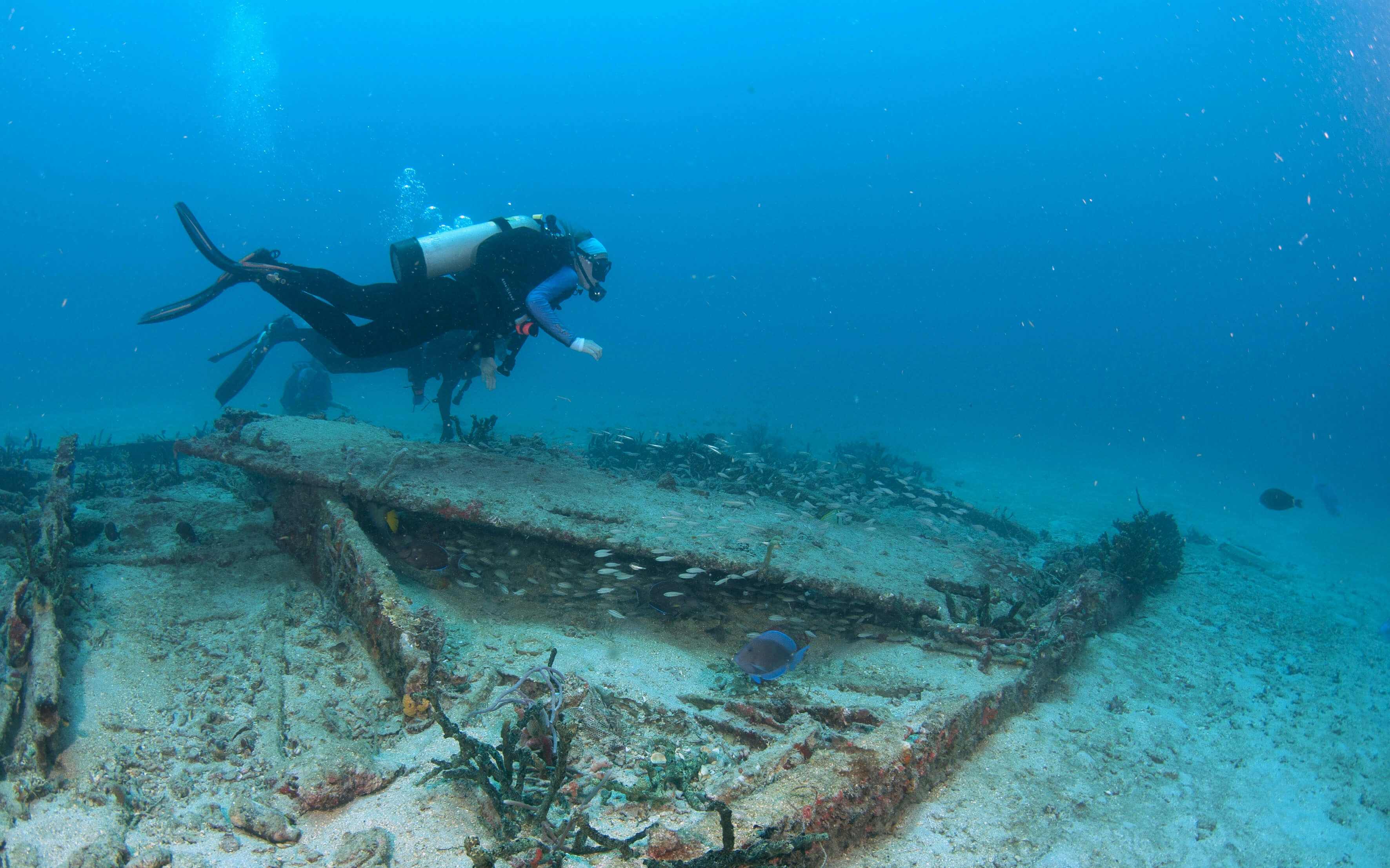Programs
Beginning in the early 1980's Broward County formed the Artificial Reef Program to enhance fishing and attract divers to the area. Since that time numerous shipwrecks and concrete reef structures have been deployed, fueling a significant economic engine in the region.
In 1989 Broward County's Mooring Buoy Program was created, providing locations on the reefs for small boats to tie up and fish or dive without causing reef damage.
In the 1997 Broward County started the Reef Monitoring Program where 25 permanent research sites were established offshore to study changes in the reef over time. This program was expanded with additional sites and to include the nearshore hardbottom just off the beach. This area is significantly impacted by storm conditions and subsequent beach erosion. This data provides a time series record of Broward County's reef system.

Contributions and Partnerships
Broward County and Florida Department of Environmental Protection's Reef Injury Prevention and Response Program (RIPRP) have been working together to restore reefs from ship groundings or anchor damage. Both agencies collaborated to redesign the commercial anchor zone offshore, so that ships would have more maneuvering room and be further away from the reefs.
In 2003 the Florida Fish and Wildlife Conservation Commission created the Southeast Florida Coral Reef Evaluation and Monitoring Project (SECREMP) which included permanent monitoring sites in Broward County. The sampling sites were chosen as representative of the three-reef tracts to monitor changes in the condition of coral reef and hardbottom habitat.
In 2004 Broward County NRD staff are also active participants in the FDEP led South Florida Coral Reef Initiative (SEFCRI), which is a group of government, non-governmental, universities, and private partners collaborating to identify and implement priority actions to reduce key threats to the coral reefs in Southeast Florida.
Since 2006 Broward County has been part of the Florida Reef Resilience Program (FRRP) coordinated by The Nature Conservancy (TNC) bringing scientists and resource managers together to develop management strategies for coping with ocean warming and other stresses on Florida's coral reefs. Every summer, when warm waters bring thermal stress to corals, EPCRD and others volunteer gather data using the FRRP Disturbance Response Monitoring protocol, a sampling design for monitoring stony coral.
In 2010 Broward County joined the efforts of National Oceanic and Atmospheric Administration (NOAA) Marine Debris Program.
Beginning in 2012, Broward County EPCRD joined the NOAA National Coral Reef Monitoring Program using the Rapid Visual Census (RVC) method which calculates fish population and diversity in the local waters. This is part of a more expansive program effort under NOAA's Coral Conservation Program Coral Reef Information System (CoRIS).
From 2012 to 2014 Broward County NRD coordinated the Southeast Florida Coastal Ocean Task Force which created recommendations to properly manage local natural resources. Task Force members included county and coastal city elected officials (Martin County southward through Miami-Dade County) and stakeholders. Some of these recommendations have been implemented through state legislation.
In 2013 Broward County participated in the Our Florida Reefs initiative coordinated by FDEP SEFCRI. This was a community effort of residents, reef-users, business owners, visitors, and Broward, Miami-Dade, Palm Beach and Martin counties to discuss the future of the coral reefs in southeast Florida. Recommended management actions in the areas of education, outreach, enforcement, fishing, diving, and boating were developed from these discussions.
Since 2015, Broward County joined FDEP, scientists and other agencies to find workable solutions for a coral disease epidemic, extending from Martin County southward through the Florida Keys and recently reported in several spots in the Caribbean.
In 2018 the Environmental Planning and Community Resilience Division joined the Disease Advisory Committee, a response group formed by FDEP, FWC, NOAA, neighboring counties, researchers and volunteer groups to try to combat this disease outbreak.
